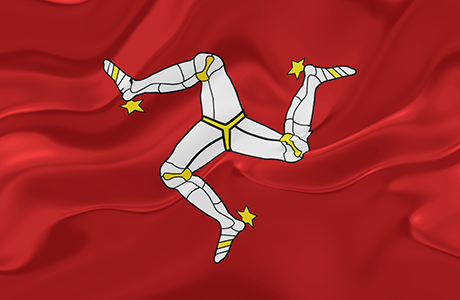This tiny island, nestled between Ireland and England in the cold Irish Sea, is most famous among the general public for the most prestigious—and dangerous—motorcycle race in the world: the Isle of Man TT.
This tiny island, nestled between Ireland and England in the cold Irish Sea, is most famous among the general public for the most prestigious—and dangerous—motorcycle race in the world: the Isle of Man TT.
But among finance professionals, the motorbikes can lie forgotten as the region proves time and time again that financial services are its true calling.
Though the island has attempted to branch out into areas such as technology, gaming, and clean tech, insurance remains one of its main pillars, with the biggest share of GDP of any sector of the economy at 14.7 percent. And among big names such as Royal Skandia and Axa are a significant portion of captive insurance companies.
According to CICA statistics, the island currently has 133 captives—a slight dip from the 148 recorded in December 2008.
“The Isle of Man is currently handling an unprecedented number of new enquiries, certainly in terms of the last 10 years,” says Isle of Man Captive Association chair Gaynor Brough. “There are a number of reasons for this including the competitiveness of its fees, its enviable client-base which is testament to its reputation as a robust and well regulated (re)insurance domicile, it’s infrastructure and sterling track record in terms of regulation and management of insurance companies.”
She adds that insurance licence-holders currently stand at approximately 141, with the island due to issue more up-to-date statistics for gross premiums written and funds under management in the next few weeks. “However, there are not expected to be significant changes to the previous reported figures and will be circa £9 billion gross premiums written and circa £55 billion funds under management.”
The island’s ‘AAA’ sovereign credit rating, two decades of continuous economic growth, political stability and proximity to London all seem to provide a strong platform, especially considering a soft insurance market that makes it hard for captives to make their mark. It also operates a risk-based approach to regulation, with changes made in 2008 including enhanced solvency requirements—to allow inter-company loans from a captive to be fully admissible when calculating the captive’s solvency margin.
In addition, certain financial liabilities may revert to shareholders’ funds for the purposes of calculating the insurer’s margin of solvency. This particular measure requires written approval from the Insurance Supervisor and, in effect, results in such liabilities being treated as equity capital of the insurer for regulatory purposes.
The first company to be attracted by the changes was Keller Group, a FTSE 250 ranked company, which established a new Isle of Man-based captive, Capital Insurance, to replace its former EU captive company.
Jackie Holman, Keller’s company secretary, said at the time that an increasing level of regulation in Dublin was a concern for Keller, with the island providing flexibility, “which we didn’t have before”.
Among those major names that have followed Keller to the island were Vaultex UK, a joint venture between two high street banks, BAE Systems and Millea Holdings.
More recently, Randall & Quilter has been given an insurance management licence “and we are also dealing with a further prospective new captive manager”, reveals Brough. “Other islands are seeing a contraction within the number of captive managers whilst the choice in the Isle of Man is expanding.”
The ‘flexibility’ that is so respected by firms can be attributed in no small part to the island’s non-EU member status. “The Isle of Man is not part of the EU and its regulatory framework is based on the insurance core principles laid down by the IAIS,” comments Brough.
“In 2011 the IAIS updated its core principles and it is compliance with these core principles which the IMF will base its assessment of all jurisdictions. The guidance provided by the IAIS recognises the need for proportionality especially when dealing with pure captive insurance companies and this type of approach is attractive to companies wishing to form captives to act as a risk management tool to manage their own risks.”
However, another reason that is never stated for a change in domicile is cost, and here again the island shows that it can compete. The island has lower capitalisation and solvency margin requirements than many of its counterparts, which Brough explains as reflective of a long-standing minimum margin below which regulatory intervention would occur on a mandatory basis.
“In addition, in line with international best practice, the island has a risk-based capital adequacy approach (that is, capital requirements appropriate to risk exposure). At present the requirements are principles/outcomes based within the island’s corporate governance code. However, like many jurisdictions, the island is assessing its framework against developing international standards with a view to implementing more detailed requirements which remain proportionate to its insurance businesses.”
In terms of competition from the Channel Isles, “the insurance legislation and regulations in the Isle of Man and Guernsey are very similar,” says Brough. “Both domiciles enjoy insurance legislation which is tailored to captive insurance and recognises the low risk nature of pure captive insurance companies, ie, writing the risks of its parent company. Both domiciles can offer both PCC and ICC structures. The differences lie in the cost base; the licence fees in the Isle of Manare considerably lower than some of its competitors and with the lower cost of living that the Isle of Man affords, salaries are generally lower and this is inevitably passed on to the client in lower captive management fees.”
Size is also a factor, as Brough states that the relative size of the Isle of Man compared to some of its Caribbean competitors means that it has better scope for expansion, and more opportunity to attract new talent pools.
“There is a pragmatic work permit process in place, whereby our workforce faces no issues about finite work permits, and the ever- present danger of having to uproot families and leave the island. This produces a stable workforce and there is very little movement of staff in the Isle of Man captive sector, which serves to produce a strong and stable client service delivery model. Some captive domiciles have recently commented on a dearth of experienced non-executive directors—the Isle of Man has no such challenges and provides a good choice of qualified NEDs.”
As for improvements, the only thing to be done, says Brough, is staying current with legislation. “In terms of the quality of its regulations, the Isle of Man stands shoulder to shoulder with other leading domiciles. However, it must continue to ensure that its legislation is foremost and keep abreast of changes in the sector so that it maintains its competitive edge.”
The introduction of the Incorporated Cell Companies Act in 2010 built on the framework for captive business as part of maintaining a comprehensive range of corporate structures available to captive owners, but considerable change in international standards for the regulation of insurance business may have an impact on the island.
“The island, as with many other jurisdictions, is carefully reviewing its captive framework and will be undertaking consultation in due course on proposals for its update in order to maintain the island’s high level of compliance with the Insurance Core Principles of the IAIS,” concludes Brough.





